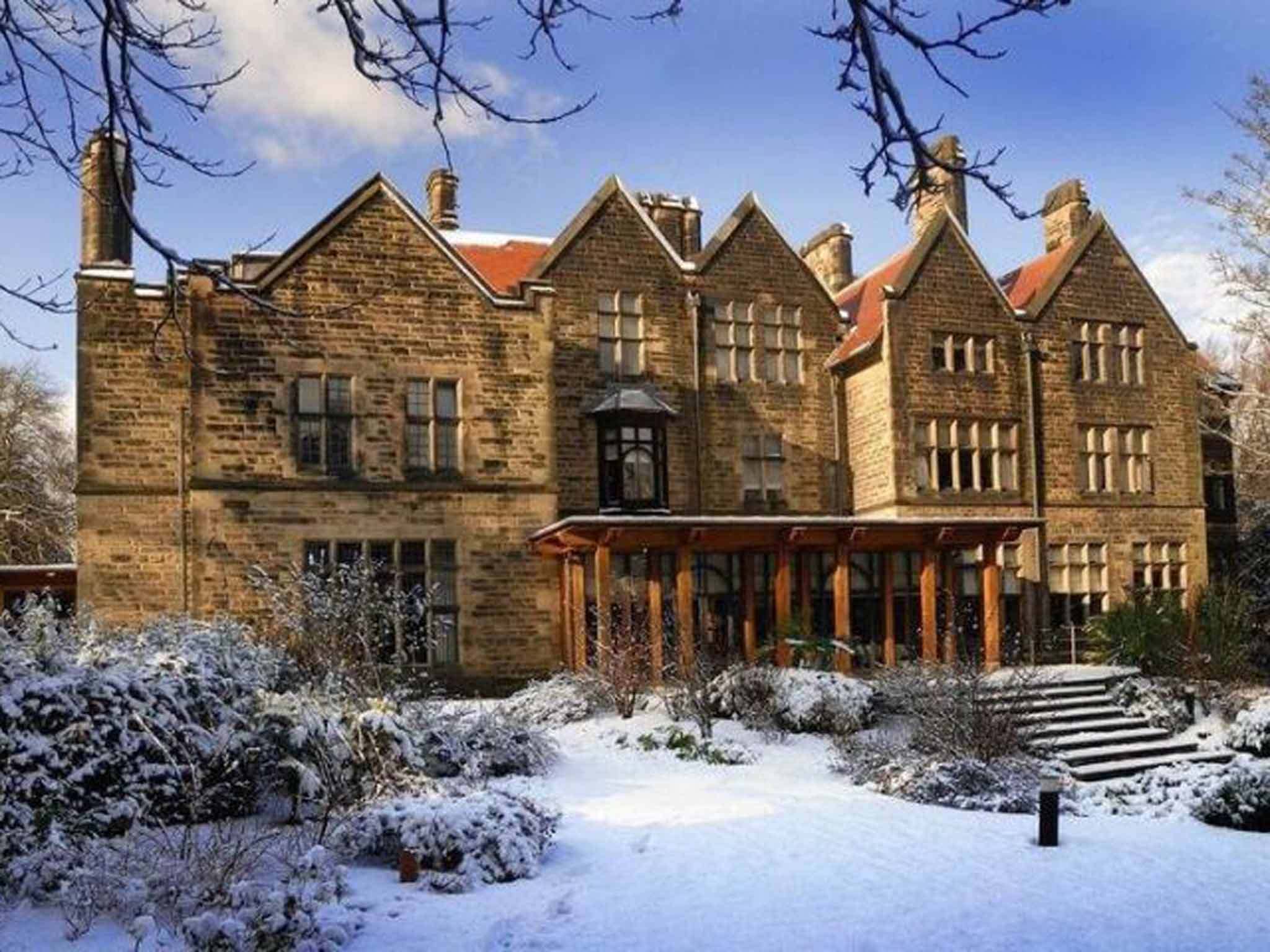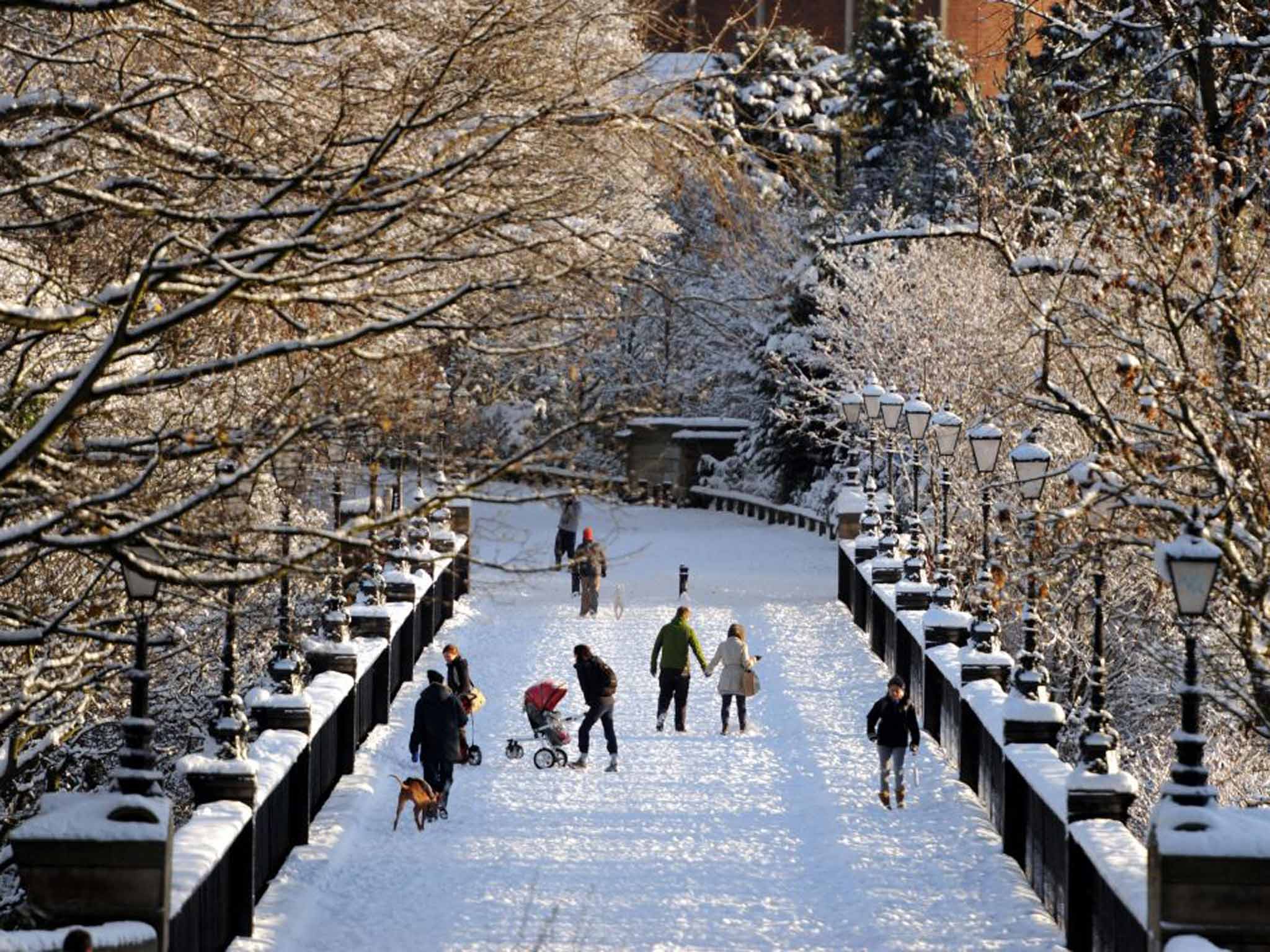Your support helps us to tell the story
From reproductive rights to climate change to Big Tech, The Independent is on the ground when the story is developing. Whether it's investigating the financials of Elon Musk's pro-Trump PAC or producing our latest documentary, 'The A Word', which shines a light on the American women fighting for reproductive rights, we know how important it is to parse out the facts from the messaging.
At such a critical moment in US history, we need reporters on the ground. Your donation allows us to keep sending journalists to speak to both sides of the story.
The Independent is trusted by Americans across the entire political spectrum. And unlike many other quality news outlets, we choose not to lock Americans out of our reporting and analysis with paywalls. We believe quality journalism should be available to everyone, paid for by those who can afford it.
Your support makes all the difference.One advantage of making your money from armaments is that you not only have the wealth but also the might to bend things to your will. Curiously, in the case of Lord Armstrong, who achieved dubious fame as “the inventor of modern artillery”, what he wanted was waterfalls, grottos, and arched bridges in a landscaped private garden.
Armstrong was a self-taught engineer and deployed his ordnance skills and tools to shape Jesmond Dene in Newcastle in the 1860s. Dene is a regional term for a ravine with a stream, in this case the Ouseburn, a glacial stream that cut its way south to the Tyne as the last Ice Age melted away.
Armstrong's problem was that the river Ouseburn neither ran fast enough nor was sufficiently picturesque for his tastes. His response was to use explosives to blast out rock to create a waterfall and a grotto. I'm at the top of a walk through the dene, and if I look closely enough I can see the joins in what, at first glance, seem “natural” rocks that were blown apart as part of Armstrong's handiwork.
The waterfall, along with rapids and weirs, were deployed to bring movement to the river. Stepping stones add an elfin dimension. These embellishments are neither natural, nor achieved by subtle means, but are exceptionally easy on the eye. There's an astonishingly rural, peaceful rhythm for somewhere so close to the city centre. The effect is picturesque, and Armstrong was merely following the fashion of framing the view that was so prevalent in the 18th and 19th century.

Micro-climates sprout up here and there; dense, moist mature rhododendrons and rhubarb-like gunnera transform groves into an experience of walking through a gloomy half light; mosses and ferns take advantage of every crack and cranny. Elsewhere, the river bank acts more as a floodplain meadow, allowing winter light to shine through and hinting at perfect places for riverbank picnics in warmer weather. Nearby is a group of elderly yews, thought to be the oldest trees in the park. Winter is also the season for the white-stemmed ghost bramble, with its spookily pale canes that add an atmospheric tone to the dene. Close by, overlooking the river, and frozen in time, are the ruins of an 18th-century corn mill, its giant wheel fixed in place, its semi-ruined gables still sturdy but facing into thin air.
While Armstrong transformed the semi-industrial wooded valley into his private playground, he allowed the public access to it twice weekly, on payment of a small fee which went to the local hospital. He subsequently gave the dene to the city of Newcastle in 1883 and today it is that increasingly rare thing – a council-funded, semi-rural park. The park is supported and cared for by a Friends community and the visitor centre by Pet's Corner is worth visiting for its background on the history of the gorge.
The paths climb steadily but gently, and suddenly I am 40 metres above the dene, the river now an indistinct line narrowing its way between ornamental rocks and bluffs far below; I overlook a valley full of native and exotic trees, along with apple and pear trees. Dippers skate across the surface of the gently tumbling river, elsewhere I try to pick out sheltering kingfishers, which in turn eye shoals of sticklebacks, and I hear, but do not see, woodpeckers hard at work.
Further downstream, just beyond a delectable arched stone bridge, the banqueting house looms high above the trail, overlooked by a 25-metre giant sequoia. These days it's just a shell, if a handsome sandstone one. Armstrong saw himself as something of a philanthropist, and along with the politicians and his entrepreneurial peers who were entertained here, he also hosted his workers, with music, often from a water-driven pipe organ.
A short walk uphill beyond this decaying architecture, briefly leading away from the river, we follow signs for St Mary's chapel, a small collapsed pile on the cusp of the dene. This is the oldest church or chapel in Newcastle, and some of the brickwork dates back to the early 12th century. Nowadays it looks inconsequential, but for a brief time in the 15th century it was recorded as one of the most important places you could worship, along with the two cathedrals of St Paul's and Canterbury.
I return to the river and make my way to Jesmond Dene House for coffee. Situated on the shoulder of the dene, the hotel blends in with the woodland. It was owned by one of Armstrong's partners and guests included authors Rudyard Kipling and Sir Arthur Conan Doyle. It's easy to imagine Sherlock Holmes stalking Moriarty around the dene's lush and shadowy corners.
I return downhill, and where the dene levels out I clamber up to the striking Armstrong Bridge strung out across the gorge. Pedestrianised, it retains much of the wrought-iron atmosphere and lighting that it had when it was built – apart from the hi-viz cyclists.
Newcastle city centre feels – must be – too far to walk. So, I hop on a bus and in barely five minutes I'm back in town in Eldon Square. The dene is so rural, so sunken, yet it is deceptively close to the heart of the city.
Travel essentials
Distance: 3 miles/4.5km
Time: 90 minutes
Map: OS Explorer 316 Newcastle Upon Tyne
Getting there
Mark Rowe travelled to Newcastle with CrossCounty (crosscountrytrains.co.uk). Virgin Trains East Coast (virgintrainseastcoast.com) also serves Newcastle.
Staying there
Mark Rowe stayed at Jesmond Dene House, Newcastle (0191 212 3000; jesmonddenehouse.co.uk). Double rooms start at £140, including breakfast.
More information

Join our commenting forum
Join thought-provoking conversations, follow other Independent readers and see their replies
Comments